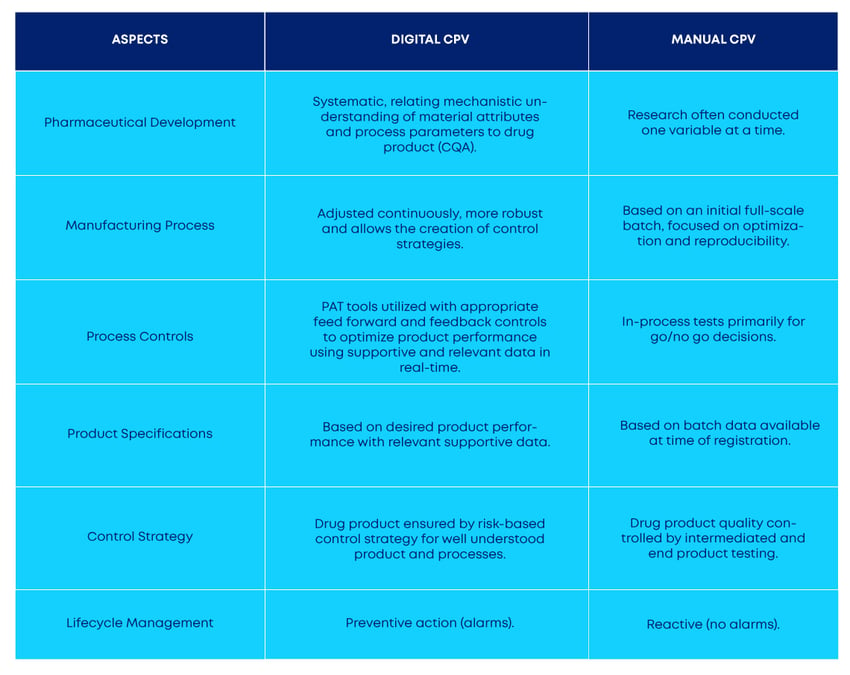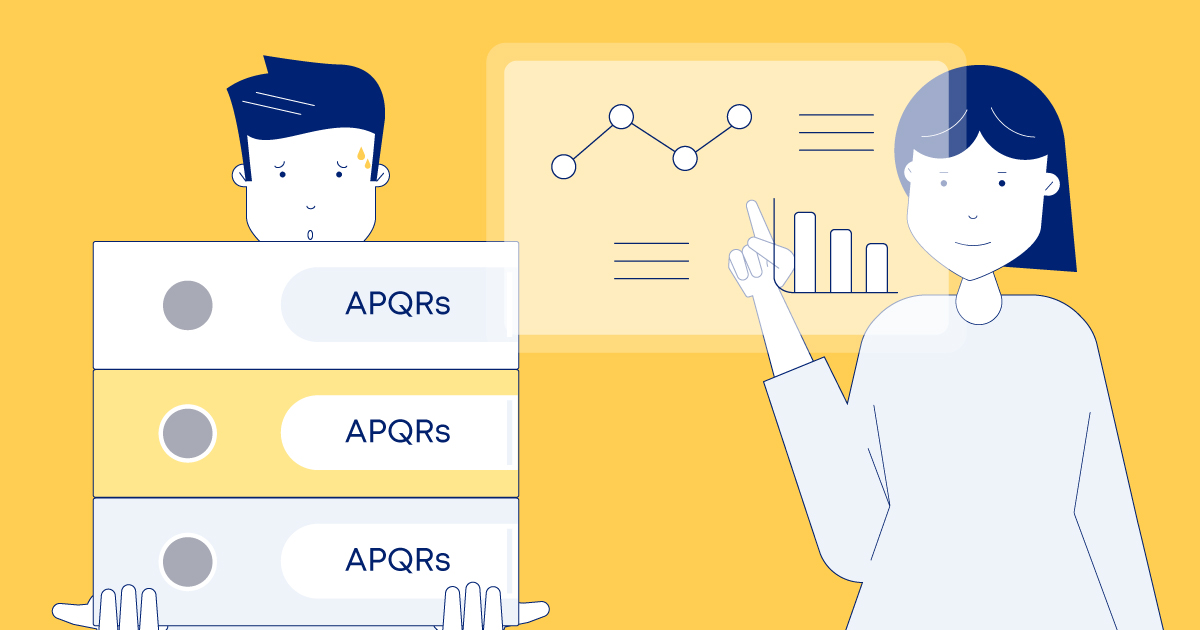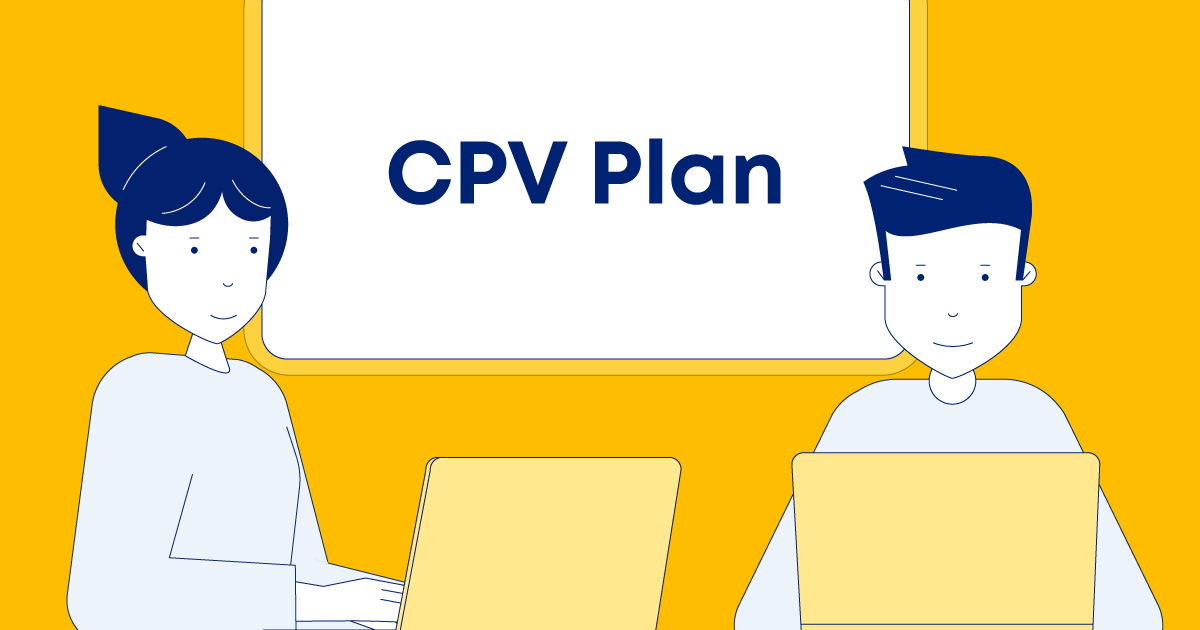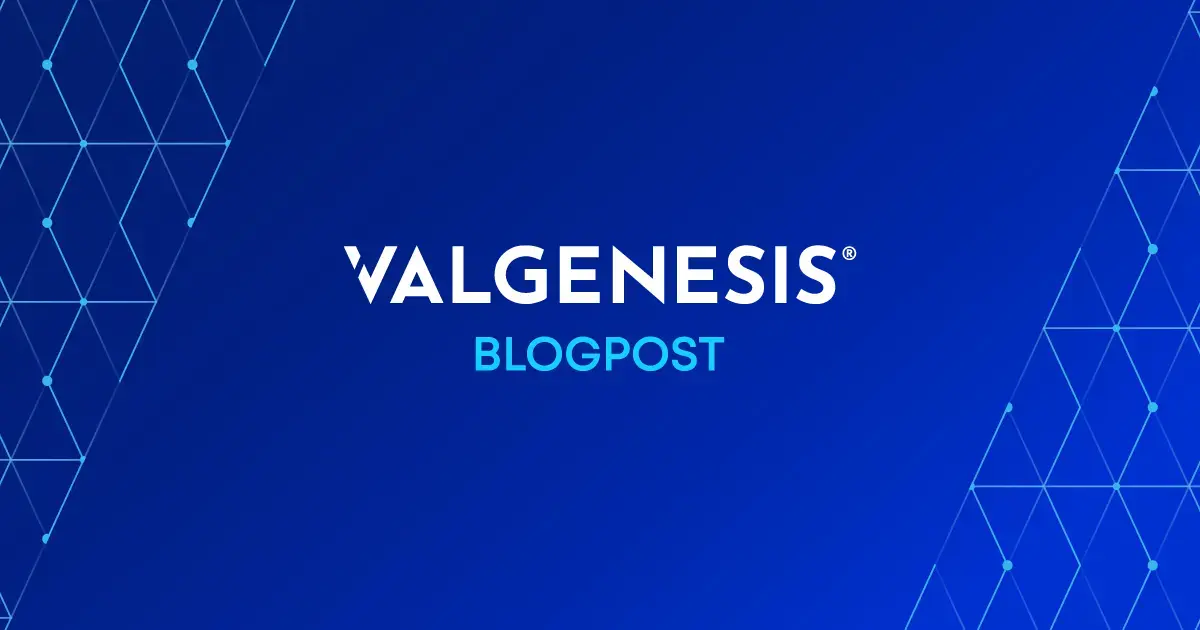If you’ve been following our posts on continued process verification (CPV), you already know it plays a critical role in maintaining product quality across the pharmaceutical lifecycle. We’ve explored how to implement CPV, overcome common challenges, and achieve regulatory alignment, but there’s one decision that can change the trajectory of your quality strategy: moving from manual to digital CPV.
Manual CPV has been a reliable starting point for many organizations. However, as data volumes grow and complexity increases, manual methods can slow progress and limit visibility. Digital CPV, on the other hand, enables real-time insights, scalable control strategies, and smarter, faster decision-making.
Let’s take a closer look at the differences—and why the shift is worth it.
Manual CPV vs Digital CPV At a Glance
Before we dive deeper, here’s a quick summary of how manual and digital CPV compare across critical areas:
- Pharmaceutical development: Manual CPV is rooted in one-variable-at-a-time experiments. Digital CPV uses multivariate analysis and design space principles to better understand critical quality attributes (CQAs) and process parameters.
- Manufacturing process: Manual CPV is based on initial full-scale batches and lacks flexibility. Digital CPV supports ongoing adjustments within the design space, enhancing process optimization in pharmaceutical manufacturing.
- Process controls: Manual methods rely on go/no-go testing. Digital CPV uses PAT tools with feedforward and feedback mechanisms, supporting statistical process control in pharma.
- Product specifications: Manual CPV ties product performance to static batch data. Digital CPV ensures product quality through real-time quality monitoring in pharma.
- Control strategy: Manual CPV focuses on end-product testing. Digital CPV supports risk-based control strategies grounded in deep process understanding.
- Lifecycle management: Manual CPV is reactive. Digital CPV is proactive, with alarms that support early intervention.
For a more detailed comparison, see the table below.

Pharmaceutical Development
A manual CPV plan is typically empirical—based on observation or experience—and often investigates just one variable at a time. This makes the process more time-consuming and resource-intensive, especially when issues arise.
Digital CPV takes pharmaceutical development to the next level. By applying multivariate experiments, it allows teams to explore how different inputs interact, helping define the design space more precisely. Real-time data capture and analysis reduce the subjectivity of risk assessments and support stronger, data-backed decisions during continued process validation in pharma.
Manufacturing Processes
Manual CPV relies on a snapshot from a single, full-scale batch. It’s not easily adjustable and emphasizes optimization and reproducibility without offering much flexibility.
Digital CPV, however, is built for continuous monitoring. It allows processes to be adjusted within the design space based on real-time data, making it easier to implement robust control strategies. This capability supports ongoing improvements and drives process optimization in pharmaceutical manufacturing, especially when scaling up or adapting production environments.
Process Controls and Product Specifications
In manual CPV, process controls are often limited to batch-level testing during registration. The quality of the drug product is verified through intermediate and end-product testing, which only highlights problems after they occur.
Digital CPV changes this approach by integrating real-time analytics and monitoring tools such as PAT. It prioritizes real-time quality monitoring in pharma, with continuous insights into product performance throughout the manufacturing process. These systems allow for early intervention, reducing the likelihood of deviations and quality failures.
Why Shift to Digital CPV?
The fundamental issue with manual CPV is that it’s reactive. You find out something went wrong only after it has already affected the batch. Investigations follow, but delays can result in lost time, wasted materials, and compliance risks.
Digital CPV turns this reactive model into a proactive one. Predictive analytics and trend analysis help you anticipate deviations before they happen. You receive alerts in real time, empowering your team to take immediate corrective action—without waiting for batch completion.
Digital CPV also clarifies the distinction between continuous vs. continued process verification—two terms that are often confused. With digital tools, you gain full traceability, consistent monitoring, and continuous control, all within the framework of continued process validation.
Looking Ahead to Digital CPV
As pharmaceutical and biopharma companies strive to modernize process validation, the shift from manual to digital CPV is becoming an important consideration. Whether you're just beginning to explore your options or want to better understand how digital CPV fits into a broader validation strategy, staying informed is the first step.
In future posts, we’ll take a closer look at implementation strategies, common pitfalls, and real-world examples of digital CPV in action.
Pharma Innovator Leverages Digital CPV to Boost Statistical Control and Cut Reporting Time from Two Weeks to Three Days
Laboratório Teuto transformed its CPV process with ValGenesis Process Insight, cutting reporting time from two weeks to three days, reducing CPV team size from 16 to 5, and enabling real-time monitoring for greater efficiency, compliance, and data integrity.
Digital CPV



